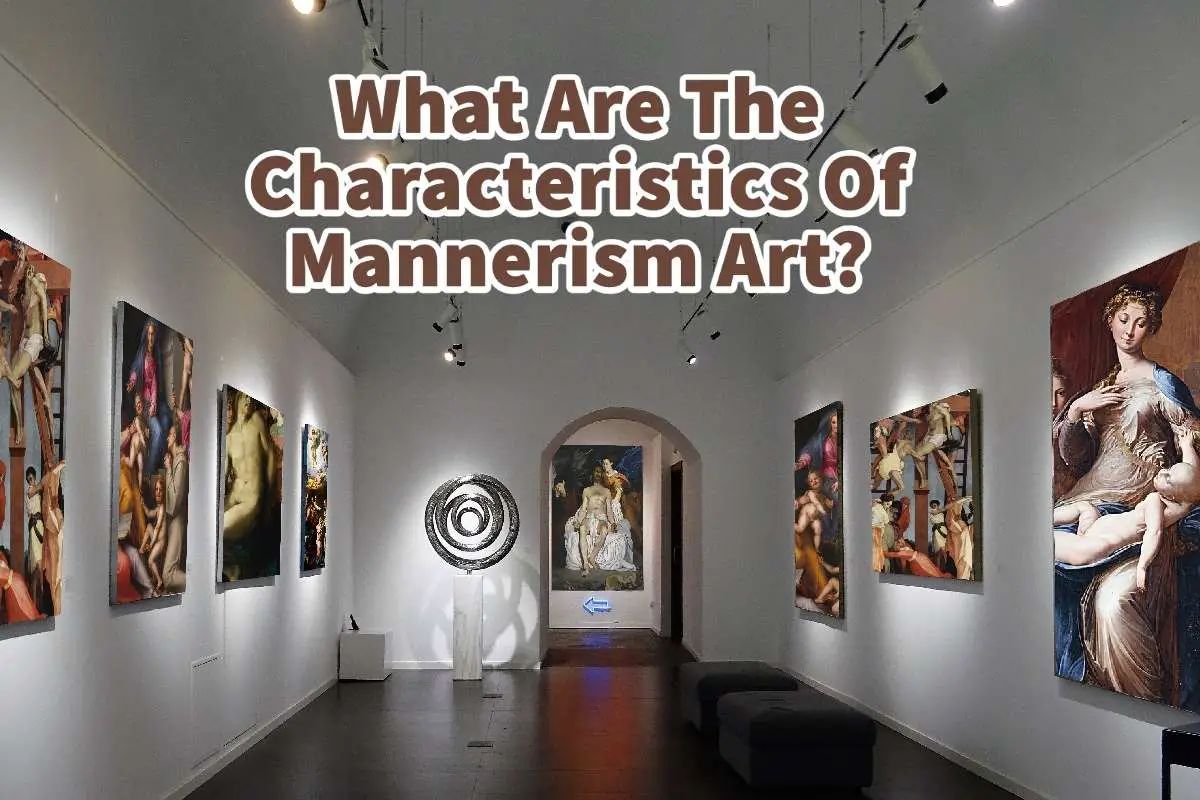Mannerism is an art movement that started in Italy right after the Renaissance. It was an art movement that was filled with unique characteristics.
Mannerism was an art movement filled with elongated bodies, tiny heads, and human figures in twisted forms. Perspective and proportion were unnecessary, but colors, contrasts, virtuosity, and agitated composition were essential to Mannerism art.
Table of Contents
- All About Mannerism Art
- Characteristics of Mannerisms
- Historical Influences Of The Mannerism Movement
- Frequently Asked Questions
- Related Questions
All About Mannerism Art
Mannerism is an art movement and style that developed in Europe around the 1520s or at the end of the High Renaissance era. Baroque art replaced Mannerism art in the 16th Century.
Mannerism art is a relatively short art movement, and many times it can get forgotten as it was between the Renaissance and the Baroque art movements.
Mannerism came from the Italian word “maniera,” which means style or manner. Mannerism is a new or peculiar style that was emerging.
The Mannerist style originated in Florence and Rome and then spread to northern Italy and Europe.
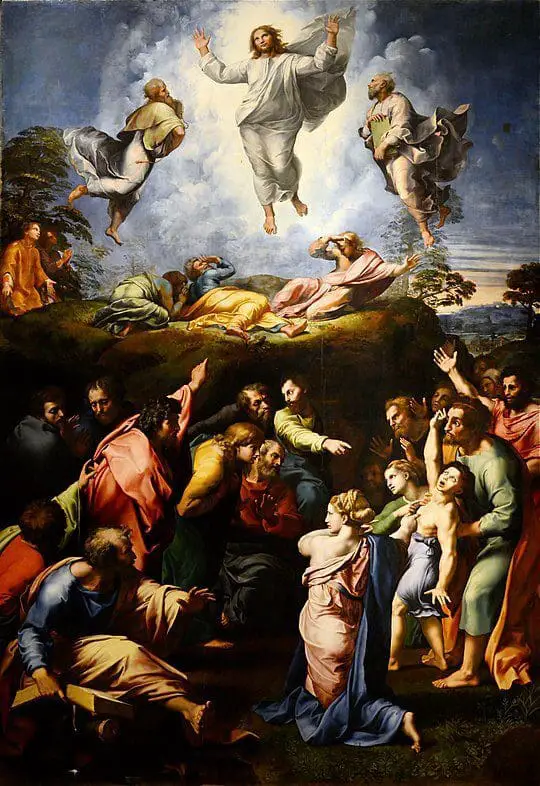
The mannerism style is present in some of Raphael’s later paintings done in Rome, most notably The Transfiguration (1517 -20).
From 1515 to 1524, the Florentine painters Rosso Florentino and Jacopo da Pontormo broke away from Renaissance classicism. They evolved an expressive yet emotionally agitated style in their religious compositions and style and their unique artistic style.
Here are some of the most notable early Mannerism works of art that helped start and influence the Mannerisms movement, along with other noted Mannerism works.
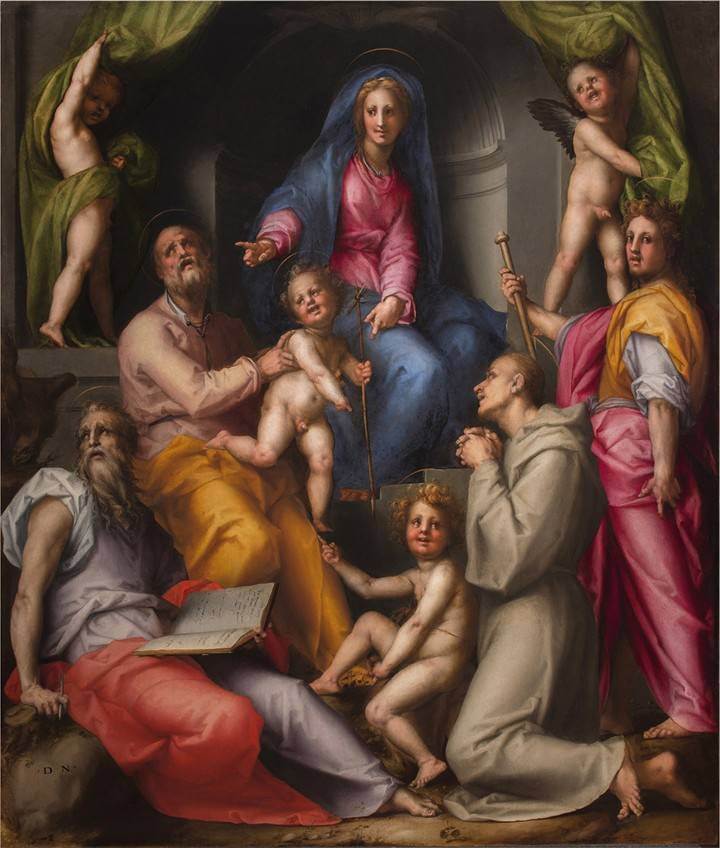
- Jacopo da Pontormo, Visdomini Altarpiece (1518) at the Church of San Michele Visdomini, Florence, Italy.
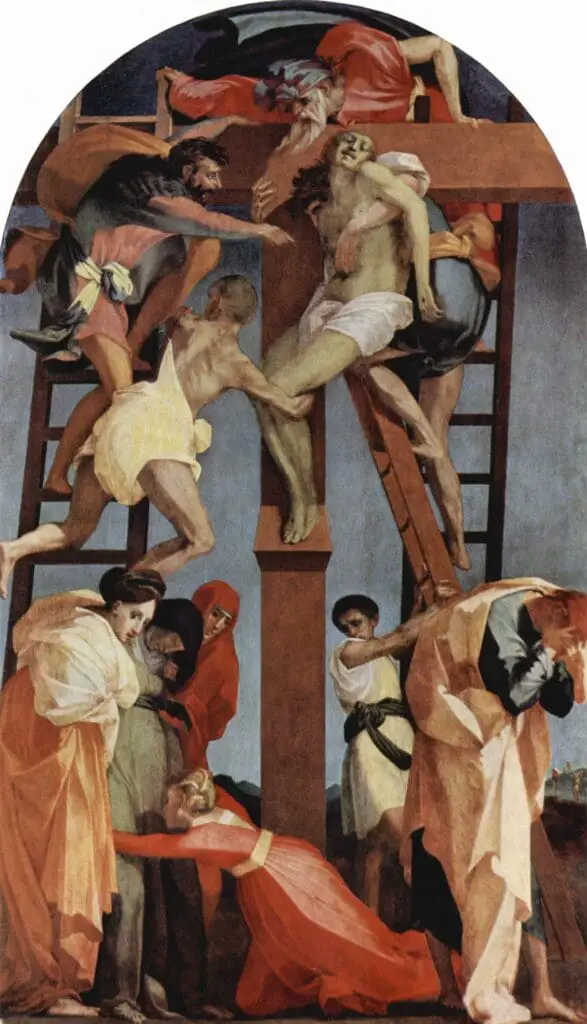
- Rosso Florentino, Volterra Deposition (1521)
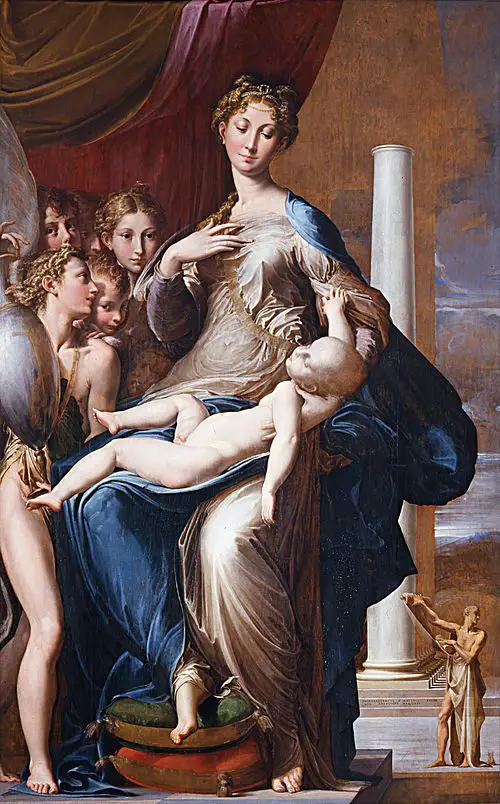
- Parmigianino, Madonna With the Long Neck (1524-49)

- Rosso Fiorentino, Dead Christ With Angels, (1526)
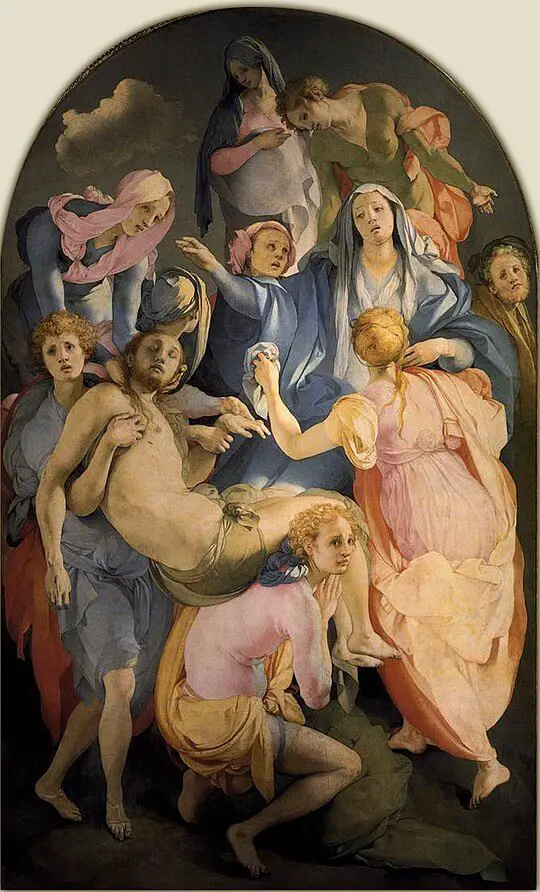
- Jacopo da Pontormo, The Deposition (1521)
Michelangelo’s Sistine painting, The Last Judgement (1536 – 41), also shows some Mannerism tendencies; the shows show that even the great Renaissance artist was looking toward Mannerism.
Characteristics of Mannerisms
When we look at Mannerism, there are two eras or types of Mannerism: Early Mannerism (1520 to 35) and High Mannerism (1535 to 1580). For both of these eras, there are some unique characteristics of Mannerism.
Here are some of the unique characteristics of the Mannerism art movement:
Mannerism Was an Anti-classical Or Anti-Renaissance Style
Mannerism marked a time when the mannerism artists rejected the classical style that was so important during the Renaissance painting era. During the Renaissance, the human form and trying to have the perfect human condition were essential.
The artist-painted compositions used no perspective or were not concerned with perfect proportions during the Mannerism movement. They did not see the need to have the proportions or views as the Renaissance painters.
The Renaissance painter reacted to harmonious classicism and idealized the human form. Mannerism art featured human figures in a new way. The human figures were in many twisted shapes, not seen in the Renaissance style.
Mannerism Art Had A Lack of Perspective and Proportions
Mannerism painting compositions did not care about perspective or proportions as the Renaissance artists did. For example, the human limbs would be elongated, and heads would be smaller than the bodies—different perspectives on how the bodies were composed and posed on the canvas.
Mannerism Paintings Were More Artificial In Style
As the Mannerism painters rejected the Classical and Renaissance eras, their paintings also tended to be more artificial.
It is more artificial because of how the human bodies in Mannerism would be twisted and in different forms. The bodies and the poses in Mannerism art seem to be artificial or unnatural.
Compared to Renaissance art, the Mannerism style was a lot more artificial. The way that the Mannerism artists would have twisted forms and did not care about the precision of the human forms as the Renassiacen artist can remind us a bit of some of the tendencies of Modern Expressionism in art.
Mannerism Did Not Look To Nature For Guidance
The Renaissance artists looked to nature as their inspiration for their art. The Mannerism artist did not look to nature at all for their art.
The Mannerism artist did not care about nature or look to nature for inspiration as the Renaissance artist did. This was because their art was not concerned with the proportion or perspective of the art.
Mannerism Believed In Virtuosity
The Mannerism artists were consumed with virtuosity. The Oxford Dictionary defines virtuosity as:
“great skill in music or another artistic pursuit.”
Oxford Dictionary
The Mannerism artists wanted to show and express their skill in their art. It was not about producing realistic or even proportions art, but it was about showing their skill in doing their art.
The Mannerism artists were obsessed with style and technique in their figural compositions. Many times, their techniques even outweighed the subject matter they were painting. The most important thing was the artists’ technique and how they implemented their artistic style.
Listen To Our Podcast About A Closer Look At Mannerism Art: Features And Characteristics Explored below or by clicking here.
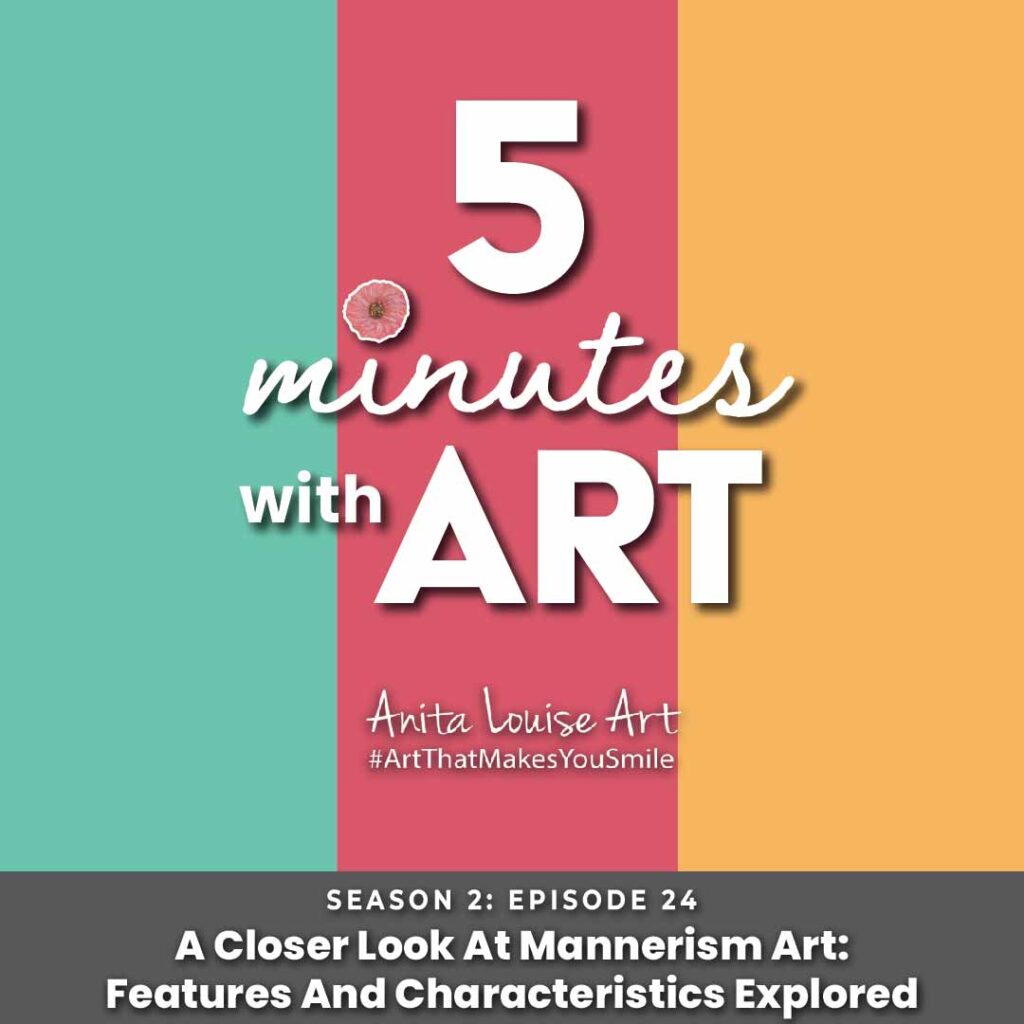
Mannerism Had Contrasting And Enriched Colors
Mannerism paintings had contrasting and enriching colors. The colors and the contrasts were an essential part of their artwork.
With Mannerism art, you find a lot of rich and deep colors such as yellows, oranges, and blues, against some deep, dark, and lighter colors.
Historical Influences Of The Mannerism Movement
When looking at an art movement, it is good to understand a bit of the history of why the movement became important. The political and social events during the time affected art movements.
During the time of the Mannerism art movement was a time in history when there were significant changes not only politically but also religiously and economically for the people in Europe. Religion and the Church had a lot of influence on the masses and the artists.
During this time, Protestantism took hold in many parts of Europe. People began to see religion a bit differently than before. The Catholic Church was once the most important religious and political influence in Europe, but a Protestant Reformation was now changing religion in Europe, including Italy.
Also, during this time in Europe, all the wars had to do with religion; these things influenced Mannerism artists.
Whenever massive changes occur in the world, it can also affect the artwork, and Mannerism art is an example of how art changed due to what was happening in religion and wars around Europe.
Anita Louise Art is dedicated to art education, great artists, and inspiring others to find and create their art. We love art that uplifts and inspires. #ArtToMakeYouSmile! #ArtToMakeYouHappy!
If you want to see any of my art, you can find out more by clicking here. If you are interested in what inspires me and my paintings, you can discover more by clicking here.
We have a free newsletter and would love you to be part of our community; you can subscribe to the newsletter by clicking here. I would be happy to talk to you if you have any questions. You can reach me, Anita, by clicking here.
Subscribe to our Anita Louise Art YouTube Channel filled with great videos and information by clicking here.
Frequently Asked Questions
What is Mannerism art?
Mannerism art refers to a style that emerged in the late Renaissance period, characterized by exaggerated forms, complex compositions, and a departure from the naturalistic ideals of the High Renaissance.
When did Mannerism art flourish?
Mannerism art flourished during the late 16th century, between the High Renaissance and the Baroque period.
What are the key characteristics of Mannerism art?
Mannerism art is known for its elongated figures, exaggerated poses and gestures, distorted proportions, use of complex and intricate compositions, artificial color schemes, and unconventional spatial arrangements.
How does Mannerism differ from the High Renaissance?
Mannerism breaks away from the balanced and harmonious compositions of the High Renaissance. It emphasizes stylized and exaggerated forms, eschewing the naturalistic ideals of proportion and anatomy.
What influenced the development of Mannerism art?
Mannerism art was influenced by the changing cultural and social climate of the time, as well as the works of artists like Michelangelo, who experimented with unconventional forms and compositions.
Which artists are associated with Mannerism?
Notable artists associated with Mannerism include Parmigianino, Jacopo da Pontormo, Rosso Fiorentino, Tintoretto, and El Greco.
How did Mannerism art contribute to the development of artistic individuality?
Mannerism placed a greater emphasis on the individual artist’s interpretation and expression, allowing for greater artistic freedom and innovation.
Did Mannerism have a lasting impact on art history?
Yes, Mannerism left a lasting impact on art history. Its departure from Renaissance ideals challenged subsequent generations of artists to explore new artistic possibilities and pushed the boundaries of artistic expression.
Related Questions
How Did Mannerism Become An Offshoot Of The Works Of The Renaissance?
Mannerism is the art movement that emerged after the High Renaissance era. Mannerism art is an offshoot of the Renaissance; Renaissance artist as Michelangelo and Raphael adopted mannerism techniques in their art. Mannerism art exaggerated and distorted elements of Renaissance art while creating a sense of imbalance in their art.
By clicking here, you can learn more by reading How Did Mannerism Become An Offshoot Of The Works Of The Renaissance?
What Was The Focus Of Renaissance Art?
The focus of Renaissance art was on the classics of Greek and Rome, humanist philosophy, and the study of the human figure. Realism was also an essential part of renaissance art. The great artists of the Renaissance also became great anatomists and studied human beings.
By clicking here, you can learn more by reading What Was The Focus Of Renaissance Art?.
What Are The Major Periods In Western Art History?
The major Western art history periods are defined as Prehistoric Art, Ancient Art, Medieval Art, the Renaissance, Mannerism, Baroque, Rococo, Neoclassicism, Romanticism, Realism, Art Nouveau, Impressionism, Post-Impressionism, Fauvism, Expressionism, Cubism, Surrealism, Abstract Expressionism, Op Art, Pop Art, Arte Povera, Minimalism, Conceptual Art and Contemporary Art.
By clicking here, you can learn more by reading What Are The Major Periods In Western Art History?.

